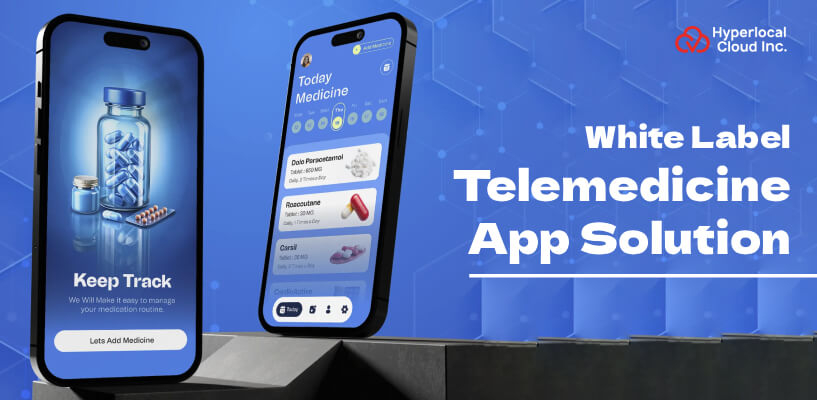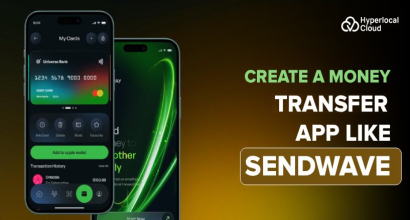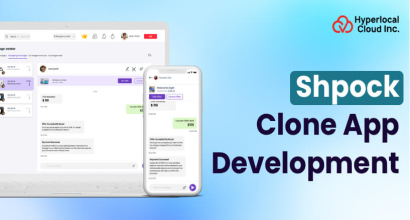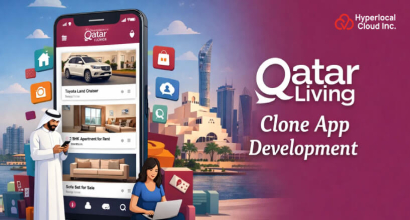In recent years, the healthcare system has undergone a massive change to digital platforms. Of these, telemedicine has emerged as one of the most influential innovations. The COVID-19 pandemic served as an important catalyst for this change and led both healthcare professionals and patients to use distance health services.
Today, the increasing number of healthcare providers is entering the digital healthcare system quickly and cost-effectively with white label telemedicine app solutions. This not only saves time and money but also helps the business get started faster.
According to market surveys, the global telemedicine market is estimated to reach more than $400 billion by 2030 and grow with a CAGR of about 25%. With the increase in smartphones, improvement of internet connection, and increasing acceptance of virtual counseling, the demand for telemedicine apps continues to increase. Therefore, telemedicine platforms offer a promising opportunity for startups, hospitals, clinics, and even individual doctors.
What is a Telemedicine App Solution?
A telemedicine application is a digital platform that allows healthcare professionals to offer medical consultation, diagnosis, prescriptions, and other services. These apps bridge the difference between patients and doctors by offering all real-time audio/video advice, chat support, and digital medical records in a mobile or web application.
These platforms are designed to simulate a person who consults the experience and at the same time maintains safety, convenience, and efficiency. From minor diseases such as colds and allergies to mental health care and chronic disease management, telemedicine apps have expanded the extent of care distribution.
List of the users who can benefit from the application:
- Patients
- Doctors and Healthcare Providers
- Healthcare Organizations and Hospitals
- Corporate Wellness Programs
- Pharmacies and Diagnostic Centers
- Caregivers and Family Members
Looking for a Telemedicine Solution That Fits Your Brand?
Working Model of a Telemedicine App Solution
A telemedicine application works seamlessly to facilitate communication between users and doctors, leveraging technological advancements. There are several steps involved in the working model of an application. Just have a look below.
1. User Registration and Profile Creation
Patients and health professionals record and create detailed profiles, including medical history, profiles, and other necessary information.
2. Search and Appointment Booking
Patients can scroll through the list of available doctors, sorted by expertise, ranking, location, and availability. They can plan agreements for their convenience.
3. Consultation via Chat, Audio, or Video Call
At the scheduled time, the patient can begin to consult through chat, voice call, or video conference. Doctors can assess the patient's condition and advise in real time.
4. E-Prescription Generation
After consultation, doctors can release digital prescriptions, which patients can use to buy medicines online or at offline pharmacies.
5. Payment Gateway Integration
The app contains a secure payment portal to facilitate consultation and other health services.
6. Medical Record Storage
All counseling history, prescriptions, and documents are safely stored in the app for future reference.
7. Feedback and Rating
Patients can provide feedback and rate counseling, and help businesses to maintain service quality.
Advantages of Investing in a White Label Telemedicine App Solution
Businesses or startups that are looking to start their business journey with a white label telehealth platform will get a wide range of advantages. Some of which are discussed below.
1. Faster Time-to-Market
One of the biggest challenges of developing any app from scratch is that it takes from the initial plan and coding to testing and launch. A white label medicine solution is really a ready-made platform that is ready to go with minimal optimization.
2. Lower Development and Maintenance Costs
Building a telemedicine app from scratch is a costly process. This requires skilled developers, designers, sensors, and regulatory experts to be hired. With a white label solution, these costs decrease significantly because the core platform has already been developed and tested.
3. Custom Branding and Personalization
This involves adding a logo, selecting color schemes, customizing user interfaces, and addressing aspects to meet specific objectives.
4. Tested and Proven Technology
Telemedicine platforms with white label solutions are often used by many organizations, which means that they undergo testing, user response, and improvement. This leads to a stable, safe, and reliable product that contains fewer errors and technical glitches than a new app developed from scratch.
5. Scalability
Most white label solutions are designed to score the telemedicine app evenly. Whether you start with a small user base or estimate rapid growth, these platforms can handle the increasing number of users and consultations without significant downtime or performance problems.
Comprehensive Types of Telemedicine Solutions
There are several types of telemedicine app solutions present that target a wide range of users by providing different services. Take a look at the information below to gain a deeper insight into the matter.
1. Live Video Consultations
A live video consultation is a prominent type of telemedicine where, with the help of virtual video calls, doctors and patients connect from anywhere. This will enable doctors to diagnose the patient, discuss symptoms, and provide immediate care.
2. Store-and-Forward (Asynchronous Telemedicine)
In this model, patient data, including medical images, X-rays, laboratory reports, and video, will be sent to a specialist for assessment. It is uniquely efficient in areas such as dermatology, radiology, and pathology, where review of visual data is influential.
3. Remote Patient Monitoring (RPM)
RPM typically utilizes a sensor or a portable tool that is a main component in order to monitor the patient's health, which includes heartbeat, BP, glucose level, and oxygen saturation. For further diagnosis, the data is sent to the medical professionals in real-time.
4. Mobile Health (mHealth)
The mHealth app focuses on general welfare and health control. They provide drug reminders, exercise tracking, dietary plans, and health training. Although not always direct, medical tools do not include interaction; these apps allow users to manage health better and integrate with telemedicine for extensive care.
5. Telepsychiatry
Mental health services distributed through telemedicine have increased rapidly. Telepsychiatry enables the evaluation of medical, consultation, and psychotherapy through secure video calls or chat. It removes stigma and uses obstacles for many people seeking mental health care.
6. Teleradiology and Telepathology
These special solutions enable external reading and interpretation of medical images and pathology players. In one place, a radiologist or pathologist can provide specialist analysis to doctors or hospitals, accelerate the diagnosis, and reduce the need for patient travel.
Start Your Telehealth Journey Now with Our Scalable White Label App Solution!
Full-Fledged Features of Telemedicine App Solution
Here is a brief overview of the emerging features of the telemedicine app solution, which facilitate the user panel, doctor panel, and admin panel. Let's begin:
Patient Panel
1. User Registration and Profile Management
Patients can do a quick registration on the platform through their contact numbers, emails, or social media accounts. The profile management allows them to update personal information, upload health documents, and track medical history.
2. Doctor Search and Filtering
Patients need a strong discovery facility that allows them to filter doctors according to expertise, experience, location, counseling fee, language, and ranking.
3. Appointment Booking and Scheduling
Patients can view available time slots in order to book an appointment with doctors immediately. Agreements should be reintroduced or canceled equally.
4. Multi-Mode Consultations
Patients should have options for video calls, voice calls, and chat consultations, regardless of their different preferences and internet connections.
5. Digital Prescriptions and Reports
After consultation, patients receive e-mail and medical reports directly in the app. This feature provides easy access and sharing facilities with pharmacies or other health professionals.
6. Payment Integration
With this, patients can pay through various methods, including credit/debit cards, digital wallets, UPI, and insurance invoicing. This will satisfy the patients and enhance their overall experience.
7. Push Notifications and Reminders
Timely alert, prescription refills, health tips, and payment confirmation for upcoming agreements keep patients associated and informed.
8. Health Records Management
Patients can safely see and handle medical records, previous counseling, and test results.
9. In-App Chat Support
The feature enables patients to directly connect with admins to ask questions, request technical assistance, or report emergencies.
10. Ratings and Reviews
Patients are allowed to deliver their useful feedback by leaving ratings and reviews about their overall consultation with the doctors.
Doctor Panel
1. Doctor Profile and Verification
Doctors create detailed profiles including their benefits, specialties, licenses, experience, and counseling fees. The system verification is used to ensure authenticity.
2. Appointment Management
Doctors can see, accept, or reschedule the appointment requests. A calendar view helps manage the daily plan.
3. Real-Time Consultations
Videos, high-quality sound, and chat tools enable doctors to engage in spontaneous virtual interactions with patients.
4. Patient Medical History
Doctors can access previous counseling, prescriptions, and health records for patients under agreements, enabling them to make informed decisions.
5. E-Prescription Generation
After consultation, doctors can produce and send prescriptions digitally, which patients can download or share.
6. Consultation Notes
Consultation summary or the ability to record notes stored in the patient's medical history.
7. Billing and Revenue Dashboard
With the help of this feature, doctors can track their income, make pending payments, and view financial reports within the app.
8. Availability Status
Doctors can determine your online/offline status to manage accessibility and avoid unnecessary appointments.
9. Notifications
Notification for future agreements, patient messages, renewal of brochures, or administrative updates.
Admin Panel
1. Dashboard Overview
A centralized dashboard provides real-time insight to the admins about the active users, total consultations, income, and system health.
2. User Management
Administrators can manage patients and medical accounts, approve registration, confirm documents, and disable users or reactivate them.
3. Appointment and Payment Management
Admins can oversee the foreign agreements, resolve disputes, and monitor payment processing to ensure easy operation.
4. Analytics and Reporting
To direct business strategies, the user generates detailed reports of engagement, income, performance of the doctor, and the patient's satisfaction.
5. Content Management
Admins have full authority to upload and manage conditions, common questions, privacy rules, and services.
6. Security Controls
Manage data encryption, user access level, authentication protocol, and match settings to ensure secure data processing and management.
7. Feedback and Review Management
Monitor and medium patient reaction and assessment are maintained to maintain the quality of the service.
8. Push Notification Management
Send targeted notifications or notifications to users for marketing campaigns, health advice, or system updates.
9. Support Ticket System
The feature enables the admins to track, assign, and solve technical or customer service issues effectively.
Steps to Build a Telemedicine App Solution
Have a look at the information below to understand the development process of a remote patient monitoring software. Let's start:
1. Market Research and Requirement Analysis
It is important for businesses to understand the healthcare or medicine market in order to identify the needs of the target groups or audience. Explore the pain points of the patient and the doctor, and determine how the application will solve these problems.
2. Define the Scope and Features
Based on research, the character and functionality of the app are clearly defined. Determine the type of telemedicine services you want to include (eg, video advice, remote monitoring). In addition, different user roles (patients, doctors, and administrators) and their respective panels are outlined.
3. UI/UX Design
Create a comfortable, user-friendly design for each panel. The goal is to make navigation easier, even for users who are not much used to the technologies. Be aware of access, especially since patients of all ages can use the app.
4. Choose the Development Approach
There are two development approaches that businesses can choose from, depending on their requirements. Usually, the development cost for a telemedicine app solution starts from $8,000. However, depending on the development processes you choose, the cost may fluctuate.
Utilize a White Label Solution: As it is quite obvious that the white label solutions are already pre-built, the development cost is reduced, and because the solutions already come with a lot of core features, the time to deploy the app will also be reduced. Businesses can build their own white label telemedicine app to enter the healthcare market.
Development from Scratch: Starting from scratch, or building everything from the ground up, will be costly and take almost a year to be deployed. Businesses need to consult with the custom software development companies to get the most reliable, secure, and scalable mobile app solution.
5. Testing and Quality Assurance
Complete testing is important. Conduct several rounds of functional, purpose, security, and performance tests. Make sure the app is in accordance with health services and data privacy standards.
6. Deployment
Start launching the app on relevant platforms (iOS, Android, web). Prepare your infrastructure to handle the first user load and ensure even performance.
7. Post-Launch Support
After the launch, you need to monitor the app for frequent errors, user reactions, and performance. Roll out regular updates, add new features, and maintain compliance with the rules to be developed.
Ready to Launch Your Own Telemedicine Platform?
The Competitive Challenges for the Telemedicine App Solution
A telemedicine app solution comes with so many competitive challenges that affect patients in many ways. The following section discusses some of the complex challenges that businesses face.
1. Regulatory and Compliance Issues
The healthcare approach is one of the most improved industries globally. Telemedicine apps must adhere to strict laws associated with privacy, patient consent, and medical licensing. Navigating different controls in areas is a complex and pricey workflow.
2. Data Security and Privacy
Managing sensitive health information requires the highest level of safety. Any data can cause serious recognized injuries and legal consequences. Ensuring strong encryption, secure authentication, and continuous monitoring is a major challenge.
3. User Adoption and Trust
Some patients and suppliers may hesitate to use telemedicine due to a lack of conviction in technology. To overcome these understandings, users need to become trained and offer high-quality service.
4. Technical Limitations
Problems such as poor internet connection, platform errors, and device compatibility issues can impact the user experience. It is important to work evenly on the app in different tools and networks.
5. Competition from Established Players
The telemedicine market consists of several players, including the large health care systems and startups. Standing out requires unique features, better service, and effective marketing.
6. Integration with Existing Healthcare Systems
The existing EHR systems for hospitals, insurance databases, and pharmacy networks can be a technically complex function.
7. Managing Scalability
As the number of users improves, the app will have to scale down without performing a screen or shutdown. Increasing a scalable infrastructure can become demanding and luxurious.
Revenue Generation Models for the Telemedicine App Solution
To generate a good revenue from the telemedicine application, businesses can follow the strategies discussed below. Go through the information and start boosting your income.
1. Pay-Per-Consultation
Patients are paid for each virtual consultation with the doctors. It is a straight model and is usually used for telemedicine services on request.
2. Subscription Plans
Patients or organizations may take membership on a monthly or annual basis for unlimited or reduced consultation. This model provides approximate, recurrent revenue.
3. Freemium Model
Basic functions (such as symptom checks or ordering) are free, while premium functions (video consultation, advanced diagnosis) require payment.
4. Corporate and Insurance Partnerships
Offers telemedicine as part of employees' welfare programs or insurance with corporate clients or insurance companies.
5. Advertising and Sponsorship
Health services-related products or pharmaceutical companies may pay to advertise in the app or sponsor certain services.
6. Pharmacy and Lab Integration Commissions
Telemedicine platforms can serve a commission for medical delivery or diagnostic tests booked through your app.
7. Data Analytics and Insights
Collection of unknown health data (with the patient's consent) may be valuable to the research, health care system, and pharmaceutical companies.
Wrapping Up!
White label telemedicine app solutions change the healthcare system by making medical services available, affordable, and practical for millions of people around the world. Whether you are a health care provider, start-up, or outfit that wants to expand your digital presence, investing in a telemedicine solution provides several benefits, including rapid distribution and low costs, as well as improvement in patient satisfaction and increased income.
By understanding different types of telemedicine services, integrating the necessary features, taking advantage of AI, and navigating competing challenges, you can build a strong platform that effectively meets the different requirements of users. To embark on your business journey, contact Hyperlocal Cloud, a leading healthcare software development company, and start building your own mobile application.



